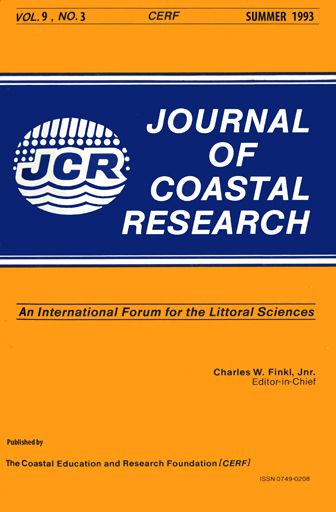Sediment Movement on Aligadde Beach, Uttara Kannada District, West Coast of India
Keywords:
Beach erosion, India, monsoon, pocket beaches, EOF analysisAbstract
To understand the erosional and accretional behaviour of Aligadde Beach, monthly measurement of beach profiles over a period of three years (November, 1988 to December, 1991) disclose spatial as well as temporal changes in beach configuration in response to different environmental process variables. In the present study, Empirical Orthogonal Function (EOF) analysis and volume changes have been compared to better understand the on-offshore sediment movement. Monthly observations during November, 1988 to February, 1990 revealed a net gain of 34.6 m3 m-1 in sediment, and the overall for November, 1988 to December. 1991 showed a net gain of 58.0 m3 m-1. During the southwest monsoon season (June-August), however, major loss of sediment was observed. Accumulation or removal of sediment on or offshore is ascribed to waves and tides, and longshore to convergence or reversal of longshore currents. The observed longshore currents revealed reversal trends; i.e., west to east during the southwest monsoon and northeast monsoon seasons and east to west during the rest of the year. The study revealed that the beach morphology undergoes cyclic seasonal changes in response to the changing wind and wave climate in three distinct phases: (1) major erosional phase (seaward sediment movement) during May-August, (2) accretional period (landward sediment movement) during fairweather season, and (3) a minor erosional phase during December-February.


